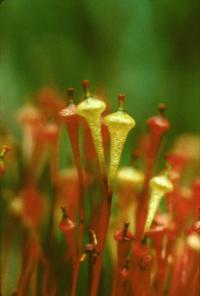Marino Lab Research - Bryophyte Ecology
| Overview: Research in my lab focuses on exploring: 1) Ecology and evolution of entomophily in Splachnaceae mosses, 2) how landscape fragmentation and structure influences the population biology and the interactions between species in agricultural ecosytems, 3) post-dispersal seed predation, and 4) sustainable agriculture. |

